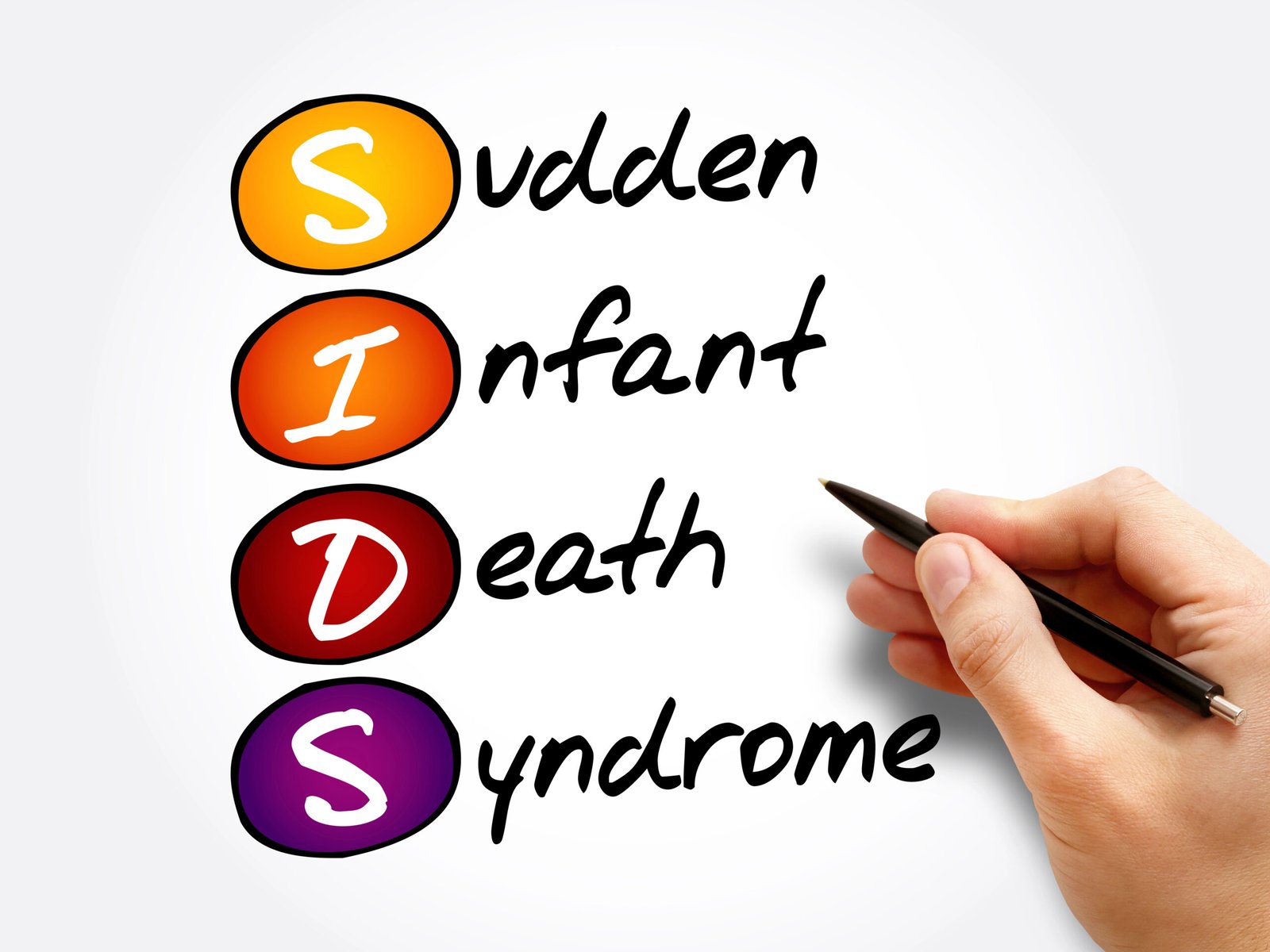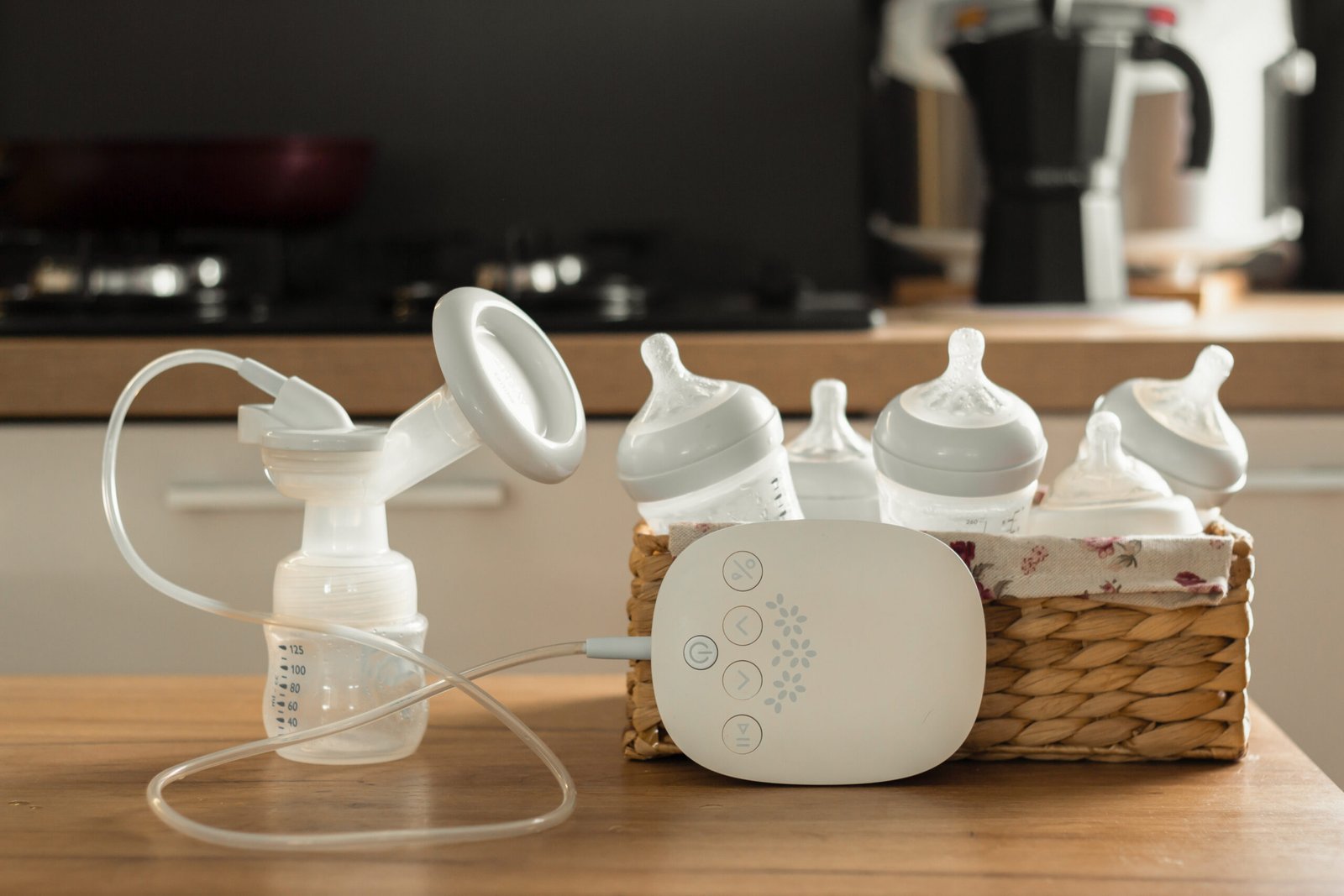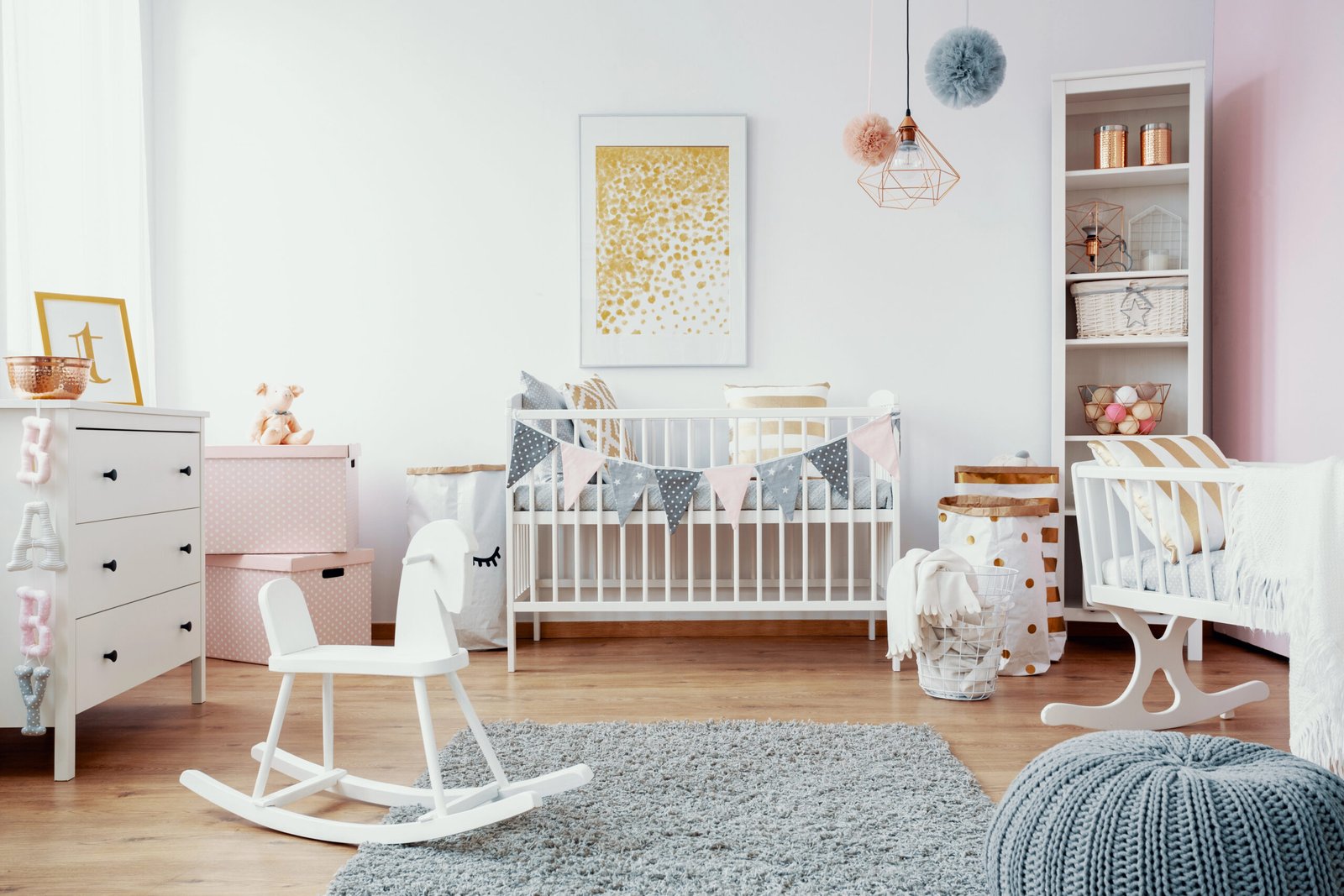Sudden Infant Death Syndrome (SIDS) is the sudden, unexpected death of an apparently healthy infant under one year of age that remains unexplained after a thorough investigation. This comprehensive guide presents the latest evidence-based recommendations and strategies for SIDS prevention based on the most current guidelines from leading health authorities as of 2025.

Understanding SIDS and SUID
Definitions and Terminology
Sudden Unexpected Infant Death (SUID) is a broader term that includes:
– Sudden Infant Death Syndrome (SIDS): Death that remains unexplained after a complete investigation
– Accidental Suffocation and Strangulation in Bed (ASSB): Death caused by airway obstruction in the sleep environment
– Unknown Causes: Deaths that remain undetermined after investigation
According to the CDC, approximately 3,700 babies died suddenly and unexpectedly in the United States in 2022. While SUID rates have declined since the 1990s following the introduction of the “Back to Sleep” campaign (now “Safe to Sleep”), significant racial and ethnic disparities persist, with Black and Native American/Alaska Native infants experiencing more than double the rate of SUID compared to white infants.
Risk Factors
Research has identified several factors that may increase a baby’s risk of SIDS:
Infant Characteristics:
– Age: Peak risk occurs between 2-4 months
– Premature birth or low birth weight
– Recent illness or fever
– Male gender (slightly higher risk)
Maternal Factors:
– Smoking during pregnancy or after birth
– Alcohol or drug use during pregnancy
– Late or no prenatal care
– Young maternal age (under 20)
Environmental Factors:
– Prone (stomach) or side sleeping position
– Soft bedding, pillows, or toys in sleep area
– Bed-sharing, especially with high-risk factors
– Overheating
– Exposure to secondhand smoke
Evidence-Based Prevention Strategies
The American Academy of Pediatrics (AAP) updated its safe sleep recommendations in 2022, which remain the gold standard for SIDS prevention in 2025. These guidelines are endorsed by the CDC and other major health organizations.
1. Safe Sleep Environment
Use a Firm, Flat Sleep Surface
– The sleep surface should not indent when the baby is lying on it
– Any surface that inclines more than 10 degrees is not safe for infant sleep
– Use only cribs, bassinets, portable cribs, or play yards that meet Consumer Product Safety Commission (CPSC) standards
– Ensure the crib mattress is specifically designed for your crib and fits tightly
– Use only a fitted sheet‚ no additional bedding
Avoid Unsafe Sleep Products
– Do not use products for sleep that aren’t specifically marketed for infant sleep (e.g. Boppy pillows, Dock-a-Tots, or similar loungers)
– Alternative sleep surfaces are only considered safe if they comply with the June 2021 CPSC rule requiring all infant sleep products to meet federal safety standards
– Avoid inclined sleepers, hammocks, baby boxes, in-bed sleepers, baby nests, pods, and similar products unless they meet federal safety standards
Keep the Sleep Area Clear
– Remove all soft objects and loose bedding from the sleep area
– This includes pillows, pillow-like toys, quilts, comforters, mattress toppers, non-fitted sheets, blankets, toys, and bumper pads
– Do not use weighted blankets, sleepers, swaddles, or other weighted objects on or near your baby
2. Safe Sleep Position
Back Sleeping
– Always place babies on their backs to sleep for every sleep period (naps and nighttime)
– The “Back to Sleep” position significantly reduces the risk of SIDS
– Once babies can roll over consistently both ways (front to back and back to front), they can be allowed to remain in the position they assume
– Continue to place babies on their backs until 1 year of age
Avoid Alternative Positions
– Never place babies to sleep on their stomachs or sides
– If a baby falls asleep in a car seat, stroller, swing, infant carrier, or sling, move them to a firm sleep surface on their back as soon as possible
3. Room-Sharing Without Bed-Sharing
Room-Sharing Recommendations
– Keep your baby’s sleep area in the same room where you sleep for at least the first 6 months, ideally for the first year
– Room-sharing can decrease the risk of SIDS by as much as 50%
– Place the baby’s crib, bassinet, portable crib, or play yard close to your bed for easier feeding and monitoring
Avoid Bed-Sharing
– The AAP does not recommend bed-sharing with your baby under any circumstances, including for twins and multiples
– The risk of sleep-related infant death is up to 67 times higher when infants sleep with someone on a couch, soft armchair, or cushion
– The risk is 5-10 times higher when bed-sharing with babies younger than 4 months
– The risk is 2-5 times higher for preterm or low birth weight infants
– The risk is more than 10 times higher when bed-sharing with someone who:
– Has been drinking alcohol
– Has used marijuana
– Has taken medications that make it harder to wake up
– Is fatigued
– Has used other drugs
Safe Feeding Practices
– If you bring your baby into your bed to feed or comfort them, place them back in their own sleep space when you’re ready to sleep
– If there’s any possibility you might fall asleep while feeding, remove all pillows, sheets, blankets, or other items that could cover your baby’s face, head, or neck
– Move your baby to their own bed as soon as you wake up
4. Temperature Regulation
Prevent Overheating
– Overheating increases the risk of SIDS
– Keep the room at a comfortable temperature (68-72°F/20-22°C)
– Dress your baby in light, breathable layers
– As a general rule, babies need only one more layer than an adult would wear in the same environment
Signs of Overheating
– Watch for signs that your baby may be too warm:
– Sweating
– Damp hair
– Flushed cheeks
– Heat rash
– Rapid breathing
Appropriate Clothing
– Instead of blankets, use sleep clothing like one-piece sleepers or wearable blankets (sleep sacks)
– Do not put hats on babies while indoors once you’re home from the hospital
– Remove bibs, hoods, and any clothing with strings or ties before sleep
5. Breastfeeding
Benefits for SIDS Prevention
– Breastfeeding is associated with a reduced risk of SIDS
– Exclusive breastfeeding at 1 month cuts the risk of SIDS in half
– Any breastfeeding of any duration provides protection against SIDS
– Studies show breastfed infants are more easily aroused from sleep, which may help prevent SIDS
Recommendations
– Breastfeed or provide expressed human milk exclusively for the first 6 months if possible
– Continue breastfeeding for at least 12 months, with complementary foods introduced around 6 months
– If you bring your baby to your bed for feeding, return them to their separate sleep surface when feeding is completed
6. Pacifier Use
Protective Effect
– Offering a pacifier at nap time and bedtime is associated with a reduced risk of SIDS
– The protective effect persists throughout the sleep period, even if the pacifier falls out after the baby is asleep
Implementation Guidelines
– For breastfed infants, delay pacifier introduction until breastfeeding is firmly established (usually by 3-4 weeks)
– Do not force the baby to take the pacifier
– Do not hang pacifiers around the baby’s neck or attach them to clothing while sleeping
– Pacifiers do not need to be reinserted if they fall out during sleep
7. Avoid Smoke Exposure
Smoking Risks
– Maternal smoking during pregnancy is one of the strongest risk factors for SIDS
– Exposure to secondhand smoke after birth also increases SIDS risk
– Babies of mothers who smoked during pregnancy are at higher risk for SIDS than babies whose mothers were smoke-free
Prevention Strategies
– Do not smoke during pregnancy
– Do not smoke after the baby is born
– Do not allow smoking in your home or around your baby
– Keep the baby’s environment completely smoke-free
8. Regular Prenatal and Postnatal Care
Prenatal Care
– Attend all scheduled prenatal appointments
– Follow healthcare provider recommendations during pregnancy
– Avoid alcohol, marijuana, and illicit drugs during pregnancy
Postnatal Care
– Attend all well-baby visits
– Keep vaccinations up to date (research suggests vaccinations may reduce SIDS risk by up to 50%)
– Discuss any concerns about your baby’s sleep with your pediatrician
9. Supervised Tummy Time
Benefits
– Regular supervised tummy time when the baby is awake helps develop neck and shoulder muscles
– Strong neck muscles may help babies move their head if they end up in a position that could obstruct breathing
– Tummy time also helps prevent flat spots on the baby’s head (positional plagiocephaly)
Implementation
– Begin supervised tummy time soon after hospital discharge
– Start with short sessions (3-5 minutes) several times a day
– Gradually increase duration as the baby grows stronger
– Always supervise babies during tummy time
10. Home Monitoring and Commercial Devices
Limited Evidence
– There is no evidence that home cardiorespiratory monitors or commercial devices that monitor baby vital signs reduce the risk of SIDS
– The AAP does not recommend using these devices as a strategy to reduce SIDS risk
Considerations
– If using monitoring devices, they should not replace following safe sleep guidelines
– Do not rely on baby monitors, smart socks, or similar devices to prevent SIDS
– These devices may provide false reassurance and should not be marketed as preventing SIDS
Special Considerations
Preterm and Low Birth Weight Infants
Preterm and low birth weight infants are at higher risk for SIDS, but they also benefit from the same risk-reduction strategies:
– Place preterm infants on their backs for sleep as soon as they are medically stable
– The benefits of back sleeping outweigh the small risk of aspiration
– Continue back sleeping throughout the first year
– Be especially vigilant about avoiding bed-sharing with preterm infants
Swaddling
Swaddling is the practice of wrapping a baby in a blanket to restrict movement of the arms and legs:
– If swaddling is used, babies should always be placed on their backs
– Swaddling should be snug around the chest but allow for movement of the hips and legs
– Stop swaddling as soon as the baby shows signs of trying to roll over (usually around 2-3 months)
– Swaddling too tightly around the hips can lead to hip dysplasia
– Avoid overheating when swaddling
Day Care and Other Caregivers
Many SIDS deaths occur when babies are being cared for by someone other than their parents:
– Ensure all caregivers, including grandparents, babysitters, childcare providers, and others, are aware of and follow safe sleep recommendations
– Formally educate childcare providers about safe infant sleep
– Have a written safe sleep policy if your child attends daycare
– Check that your baby is always placed on their back for sleep by all caregivers
Cultural Considerations and Addressing Barriers
Different cultural practices around infant sleep exist worldwide. Healthcare providers should:
– Acknowledge cultural differences in a respectful manner
– Provide clear information about safe sleep practices
– Work with families to find culturally appropriate ways to implement safe sleep recommendations
– Address practical barriers such as limited space or resources
For families with financial constraints, many communities offer programs that provide free or low-cost cribs or bassinets. Contact your local social services agency, health department, or pediatrician for information.
Emerging Research and Future Directions
Research into SIDS prevention continues to evolve. Some areas of current investigation include:
– Genetic factors that may predispose some infants to SIDS
– Neurological abnormalities affecting arousal responses during sleep
– Biological markers that might identify at-risk infants
– More effective interventions for high-risk populations
– Improved understanding of the interaction between environmental and biological risk factors
Conclusion
While SIDS remains unpredictable, following these evidence-based prevention strategies significantly reduces the risk. The most important steps parents and caregivers can take are:
1. Always place babies on their backs to sleep
2. Use a firm, flat sleep surface in a safety-approved crib
3. Keep the sleep area clear of soft objects and loose bedding
4. Share a room but not a bed with your baby
5. Avoid smoke exposure before and after birth
6. Consider offering a pacifier at sleep times
7. Avoid overheating
8. Breastfeed if possible
9. Ensure all caregivers follow these guidelines
By implementing these strategies consistently, parents can create the safest possible sleep environment for their babies and significantly reduce the risk of SIDS.
References
1. American Academy of Pediatrics (AAP). “Safe Sleep.” 2024.
2. Centers for Disease Control and Prevention (CDC). “About SUID and SIDS.” September 2024.
3. Metropolitan Pediatrics. “5 Ways to Reduce the Risk of SIDS in Infants.” February 2025.
4. Piedmont Pediatrics. “Updated American Academy of Pediatrics Sudden Infant Death Syndrome Prevention Recommendations.” 2024.
5. Task Force on Sudden Infant Death Syndrome. “SIDS and Other Sleep-Related Infant Deaths: Updated 2022 Recommendations for a Safe Infant Sleep Environment.” Pediatrics. 2022.
6. Eunice Kennedy Shriver National Institute of Child Health and Human Development. “Safe to Sleep¬Æ Campaign.” 2024.
7. Cleveland Clinic. “SIDS (Sudden Infant Death Syndrome): Causes & Prevention.” 2024.
8. Community Care. “Updated AAP Recommendations for Preventing SIDS and Other Sleep-Related Infant Deaths.” 2023.



